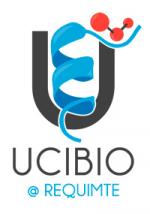Inkjet printed and {"}doctor blade{"} TiO2 photodetectors for DNA biosensors
- Citation:
- Inkjet printed and {"}doctor blade{"} TiO2 photodetectors for DNA biosensors, de Martins, {Rodrigo Ferrão Paiva}, Fortunato {Elvira Maria Correia}, Baptista {Pedro Miguel Ribeiro Viana}, and Águas {Hugo Manuel Brito} , Biosensors & Bioelectronics, jan, Volume 25, Number 5, p.1229–1234, (2010)
Abstract:
A dye sensitized TiO2 photodetector has been integrated with a DNA detection method based on non-cross-linking hybridization of DNA-functionalized gold nanoparticles, resulting in a disposable colorimetric biosensor. We present a new approach for the fabrication of dye sensitized TiO2 photodetectors by an inkjet printing technique-a non-contact digital, additive, no mask and no vacuum patterning method, ideal for cost efficient mass production. The developed biosensor was compared against a dye sensitized photodetector fabricated by the traditional {"}doctor blade{"} method. Detection of gold nanoparticle aggregation was possible for concentrations as low as 1.0 nM for the {"}doctor blade{"} system, and 1.5 nM for the inkjet printed photodetector. The demonstrated sensitivity limits of developed biosensors; are comparable to those of spectrophotometric techniques (1.0 nM). Our results show that a difference higher than 17% by traditional photodetector and 6% by inkjet printed in the photoresponses for the complementary and non-complementary gold nanoprobe assays could be attained for a specific DNA sequence from Mycobacterium tuberculosis, the etiologic agent of human tuberculosis. The decrease of costs associated with molecular diagnostic provided by a platform such as the one presented here may prove of paramount importance in developing countries. (C) 2009 Elsevier B.V. All rights reserved.
Notes:
n/a

